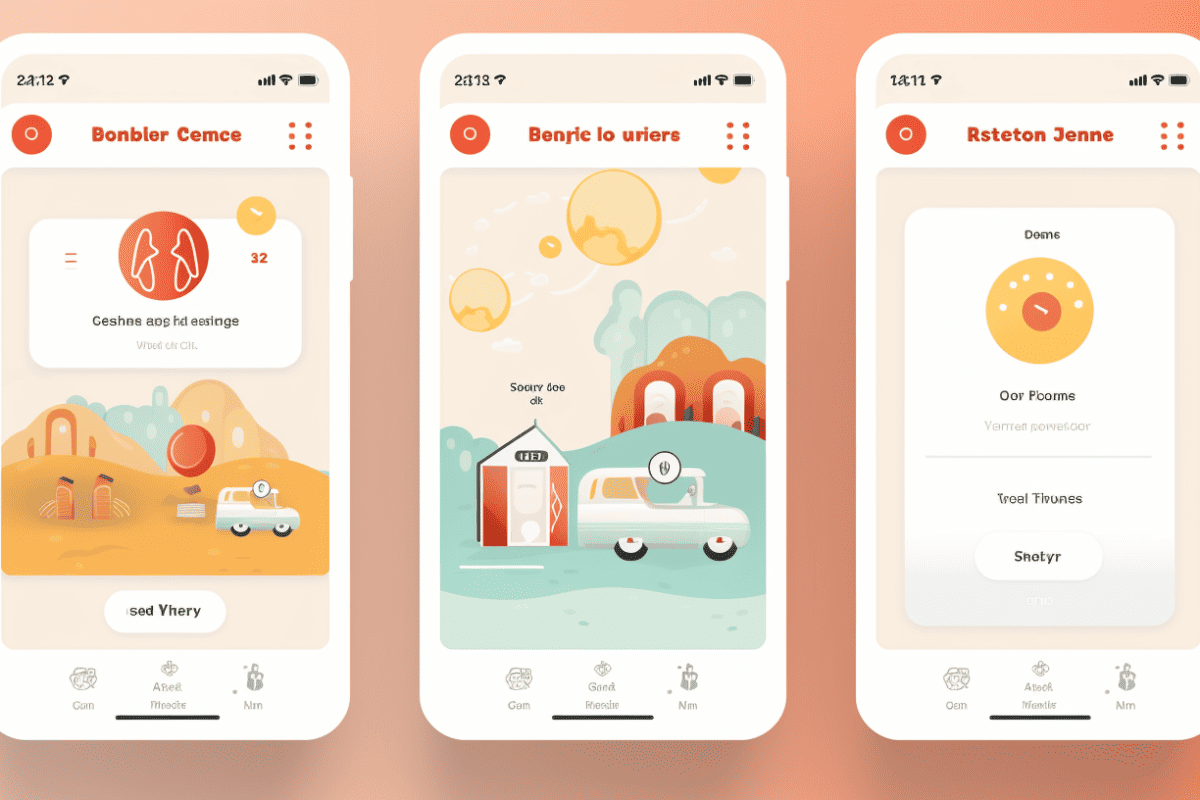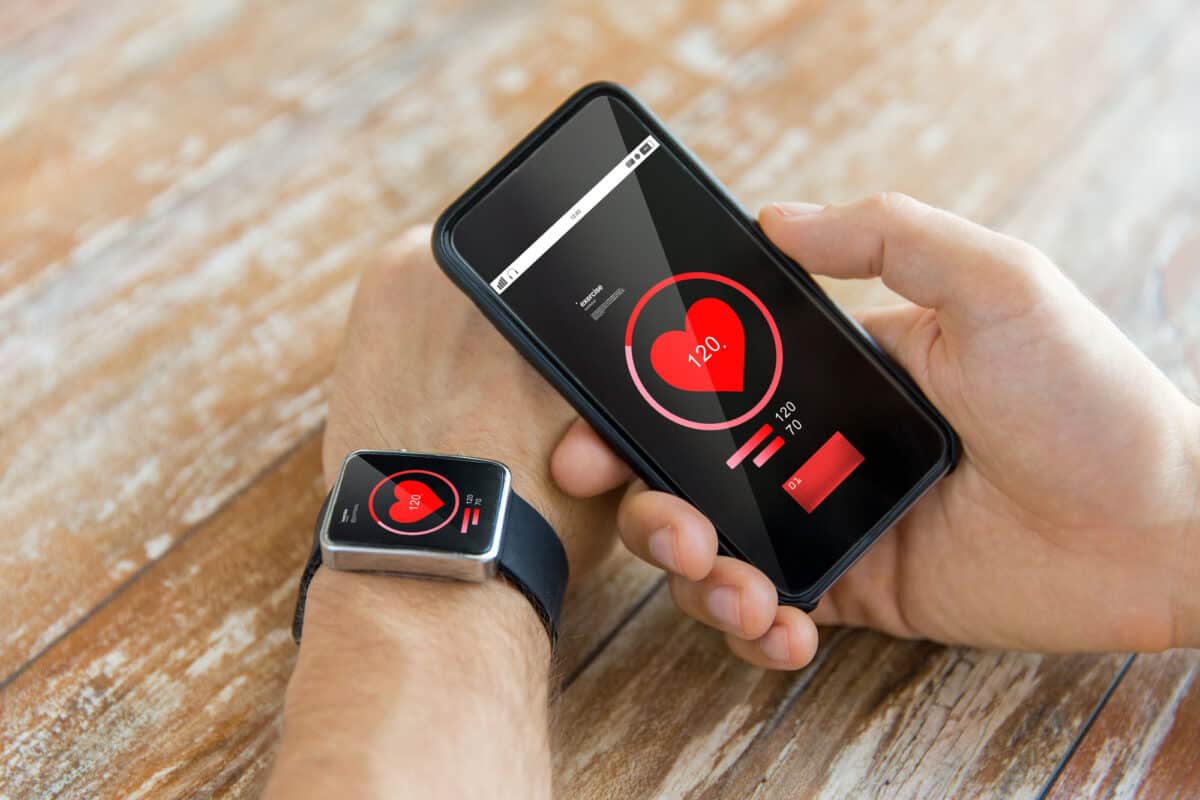When Lydia Yarlott arrived at a large London hospital for her first day as a junior doctor she was ‘stunned’ to be added to a WhatsApp group. ‘That’s literally how you organise tasks, how you manage workflow and how you communicate,’ she marvels. Bearing in mind that the app is anything but secure, and that Snapchat, too, is being used to exchange patient scans, it’s hard not to be very concerned by the state of clinical communication. Instead of waiting for the powers that be to fix the broken system, Lydia, her fiancé and a fellow doctor have come up with a solution right now which is being used in the NHS right now.
The NHS’s attitude to WhatsApp is confused. While on the one hand saying no patient data should be sent via the app, doctors using it innovatively to engage patients are being applauded and, as Lydia discovered, it is an essential part of life on the ward. ‘We absolutely couldn’t do our jobs without WhatsApp,’ Lydia believes. ‘If you’re in another ward, you’ve no idea what your colleagues are doing and you could be looking after the same patient. If communication breaks down, you might be repeating tests. Even last night I had three different calls trying to refer the same patient to me. It’s just so not joined up!’ Her frustration is echoed throughout the country, with more and more nurses and doctors turning to apps to bypass antiquated NHS systems.
The NHS’s intentions are good but given that the National Programme for Information Technology (NPfIT) failed to meet its goals over its 8-year existence and that last year’s Watcher Report concluded that ‘it is better to get digitisation right than to do it quickly,’ life on the ground is still frustratingly compromised. Public healthcare is way behind the times and surely one of the few places in the Western world still relying on faxes and pagers.
‘I absolutely hate pagers,’ says Lydia of the technology that was first introduced in the 1950s. ‘They interrupt your work so much – you’ve no idea whether you’re being called to A&E because someone’s stopped breathing or to prescribe a laxative. Literally. You have to stop what you’re doing, find a landline – sometimes having to queue to use one – and by the time you get through the person paging may have left the other end. It just makes no sense.’ So it’s no wonder that hospital workers are seeking their own solutions.
Lydia’s is lucky enough to have a fiancé perfectly equipped to help her find a way to win the daily communication battle. Philip Mundy is a serial digital innovator who has previously built a communication platform in retail and a workflow platform in property. After Lydia described another day of wasted hours and Kafkaesque bureaucratic blunders, he determined to come up with an answer. ‘I was quite resistant at first,’ Lydia continues. ‘It takes a lot of motivation to try to change something – especially when you’re in a system that feels so broken.’
Nevertheless, Philip developed some wireframes and they did some research. They discovered that others had tried to solve the problem before but hadn’t done it well because they’d prioritised security, which in turn lead to clunky platforms. The couple, along with friend and fellow doctor Barney Gilbert, eventually came up with a tool that provides secure instant messaging and is compliant with all the NHS and European data protection guidelines. ‘You can send a patient profile, photos to help with diagnosis… and then we thought it would be nice to give people some control over their workflow. So you can create and initiate tasks and assign them to members of your team, and we also have a mini patient notebook…’ Lydia explains. ‘What happens at the moment is that you carry round a piece of paper containing scribbled notes about your patient. If you lose it, it’s a disaster, not only in terms of data protection and privacy but because you’ve lost your workflow for that day. So things get missed, people don’t get discharged. Sometimes it’s genuinely a matter of life or death.’
Inclusivity and speed
The reason that Forward works so well is because someone on the frontline has thought it through. ‘The system is simple in design and is aimed for use by everyone involved in a patient’s care. For instance, nurses often have a completely different handover system to doctors – so doctors and nurses aren’t communicating effectively. Then there are pharmacists, physiotherapists, porters and social workers – our vision is to build connected hospitals.’ Lydia is now placed at a smaller hospital, where she’s recruiting new users one by one. ‘There’s a lot of ingrained apathy within the NHS. The feedback has been overwhelmingly positive but it doesn’t necessarily mean people are going to change their behaviour. That’s one of our many challenges. But, so far, this is where we’ve got the most traction.’ Forward has over 200 users at her own hospital, and is growing organically in other Trusts.
But they’re a long way from mass adoption. ‘We’ve taken a two-pronged approach,’ Lydia explains. ‘We’ve been liaising with Trusts, firstly to know what their requirements are and what they would consider safe to use in terms of patient data, which is what we’ve done at my hospital. But we also recognise that the NHS is very bad at changing itself and if you were to try to sell a product like this to a trust, you’d be looking at a two-year sales cycle and that’s just way too slow. It needs to be done now. So we’re going for the viral root of adoption, which is beginning to work. We’re planning a bigger launch in the next couple of months when we are totally happy with the product – only two days ago there was a problem with the server, so we have to be confident everything’s working as it should.’
Further benefits and the competition
Crucially, the app has been designed for intuitive use – no need for the kind of training common in other NHS systems. And it’s streamlined to reflect practitioners’ needs rather than designed to answer procurement managers’ checklists. ‘It’s like using WhatsApp but I don’t have to exchange my personal mobile information. I can search by who is in the hospital and on call, then instant message them. You can stay with the patient while messaging, too, which is important.’
Forward are open to integration, too, being an open API. ‘There are other systems that are good – the GP’s EMIS Web system for instance,’ says Lydia. And when EPRs are fully up and running the system could work with that data. Competition-wise, Lydia feels that Forward has the potential to do very well because it has additional functionality over other apps on the market (‘you’ll have to forgive me for being biased!’), which differentiate it from WhatsApp. ‘To get people off that very reliable system, you have to have extra features that are useful – security is a pull but not enough of one. We purposefully don’t integrate with other systems (which are different in every hospital). We want to provide a universal stand-alone solution to clinical communication’. Forward is relying on the kind of word-of-mouth endorsement that fuels the popularity of technology in the consumer world. Given that doctors move around so much – junior doctors move every year for at least a decade – word is spreading quickly.
Over at the Royal Free, they too recognise that old technology is seriously compromising patient outcomes (last year they claimed that over 100,000 lives per year could be saved if conditions like AKI were monitored more closely). The Trust is working with Google and Deepmind’s Streams instant alert app, but it lacks the vital communication element that Lydia and others have identified.
The future for Forward
It’s still early days but there’s clearly no time to waste. We’ve started an audit cycle (i.e. cms audit hospital) and will keep re-auditing to get statistics to prove how much time we can save. We want to find out if doctors like it and what other features they might want. We’ve already integrated QR scanning as a result of some feedback.’ Forward has surveyed 120 doctors, discovering that they waste at least an hour a day on average sorting out these problems that the platform could potentially solve. ‘That’s a huge efficiency saving and trusts do recognise the value in that.’
They are currently raising seed plus funds, and have been approached by third parties and private hospitals. ‘We’re going to get some interesting data. Talking to trusts, we’ve discovered that they’re completely blind to things like how many doctors are in the hospital at any one time, so data like that would be invaluable to them. All the rotas are on Excel documents on individual computers that aren’t connected, so there’s no way of centralising things and this information isn’t being used to predict times when annual leave clashes are likely,’ Lydia reveals.
‘I’m absolutely passionate about changing what’s on the ground in the NHS. I don’t want to stop being a doctor. We now have a team of eight including two full-time doctors working on the project from August,’ says Lydia. ‘The NHS desperately needs help – I see examples of the failure of communication affecting patients’ lives every single day. The other day I spent two hours trying to print a prescription so that a dying man could go home. Eventually someone managed to print it on the fifth floor in a manager’s office – miles away from the ward. I have about 15 log-ins for different systems at the moment – one for bloods, one for histopathology, one for ultrasound etc etc. This kind of stuff drives you bonkers after a while. It affects everything from how quickly patients get seen, how their case is escalated, how they are discharged. There are so many bottlenecks and so many of those are to do with communication. It’s just common sense’.
Kathryn Reilly
Kathryn Reilly is a freelance multi-channel content creator and editor. She is part-time Content Chief at MedTech Engine. She was integral in building a facilitator designed to unleash the potential of tomorrow's innovations. She determined the editorial strategy and tone of voice, sourced KOLs and experts, and found the best contributors in the industry to create practical resources and inspiring thought leadership content. MedTech Engine is now a successful and much respected content-driven platform that generates huge interest and supports innovation and collaboration.


